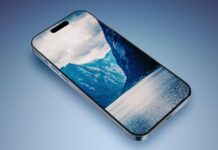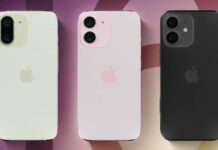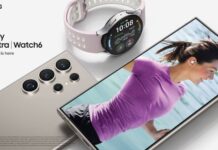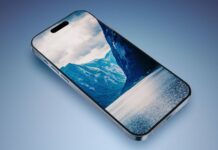[youtube]http://youtu.be/huffl7HRfG0[/youtube]
After the reviews for iOS 7 si iPhone 5C, now I present to you the first reviews published for iPhone 5S, the most attractive new smartphone launched by Apple Lossless Audio CODEC (ALAC),. As expected, most of those who tested the device first praised the design of the device, with Apple implementing two new colors and appearing to have changed the method by which the edges of the device are polished. By design, touch ID and the fingerprint reader attracted the attention of the majority of reviewers, the function being presented as mature, useful and implemented much better than the gesture control systems or those for eye-tracking.
Continuing, the camera attracted the attention of just as many people, most of them praising its ability to record pictures in low light conditions, the True Tone Flash proving to be more than good, but the differences compared to iPhone 5 in terms of the quality of the pictures, they are quite small. In the end, the performance remains, iPhone 5S having a face A7 compatible with 64-bit architecture, but we don't know how fast the processor is or how much RAM Apple included in it, but we know it's fast, very fast.
Of course, most of those who made reviews recommended a purchase, now it remains for you to choose.
[youtube]http://youtu.be/wlMtAv_-_9I[/youtube]
Jim Dalrymple, The Loop
Setting up a fingerprint is as easy as resting your finger on the Home button and following the onscreen instructions. The button will vibrate when it's reading; lift your finger and rest it on the button again; and repeat until it's done. Very simple. Speed increases are something we expect with new Apple products, but the iPhone 5s goes above and beyond expectations. In addition to the faster processor, the iPhone 5s is also the world's first 64-bit phone. These changes make the 5s up to twice as fast as the iPhone 5—that's a significant increase.
Darrell Etherington, TechCrunch
At first glance, it's easy to dismiss the fingerprint sensor as a whiz-bang feature designed to attract eyeballs and do little else. But this isn't that. The fingerprint sensor, unlike some other questionable recent smartphone tech like gesture control or eye-tracking, doesn't feel like a gimmick or tech demo; it feels like a mature feature that actually enhances the overall experience of using an iPhone in a noticeable way that you encounter very frequently.
Walt Mosberg, AllThingsD
All my pictures were slightly sharper than on the iPhone 5 and low-light pictures were much less washed out by the flash. The camera app has been improved, with a new burst mode that takes many shots quickly and then picks the best ones, and a slow-motion video feature that lets you choose parts of an action sequence to slow down. It worked seamlessly.
Myriam Joire, Engadget
First, let's tackle the camera's low-light performance. The shots we took with the 5s were consistently better than what we took with the 5: they were sharper, with finer details, more natural colors and far less noise. As you might expect, our daylight shots were roughly on par, although there were a few times when the 5s won out by a slight margin, offering just a little more detail. All told, the 5s plays in the same league as all those other flagships with a bigger emphasis on imaging. Even so, our sample shots still showed more noise and less detail than the same images taken with the Nokia Lumia 1020. The 5s also does a good job of reproducing color, but it's not the best performer in this category, either. Make no mistake, though: the iPhone has been – and continues to be – great as a simple grab-and-go camera. It may not be a best-in-class performer, but the vast majority of iPhone users will still be happy.
Edward Baig, USA Today
Apple hasn't opened up Touch ID yet to outside app developers, something I'd like to see happen sooner than later. The company has also delayed the release of a feature called iCloud Keychain that would let you store all your Web passwords in the cloud. So in the future you might be able to use your fingerprint to get past all your Web passwords, making Touch ID potentially more powerful. One thing not seen elsewhere is the True Tone flash system in the 5s. It is based on two flashes working in tandem to automatically determine the intensity and best combination of flashes. I got generally lovely results taking flash photos, although I noticed it sometimes took an extra second or so before the camera actually took a picture.
Scott Stein, CNET:
The Touch ID-enabled home button feels invisible; it works with a tap, can recognize your finger from many angles, and feels like it has less of a fail rate than fingerprint sensors I've used on laptops. It's impressive tech. It worked on all my fingers, and even my toe (I was curious).
David Pogue, The New York Times
The most heavily promoted feature is the 5S's fingerprint sensor, which, ingeniously, is built into the Home button. You push the Home button to wake the phone, leave your finger there for another half second, and boom: you've unlocked a phone that nobody else can unlock, without the hassle of inputting the password. (And yes, a password is a hassle; half of smartphone users never bother setting one up.) The best part is that it actually works — every single time, in my tests. It's nothing like the balky, infuriating fingerprint-reader efforts of earlier cellphones. It's genuinely awesome; the haters can go jump off to perish.
Luke Peters – T3
We kicked off this review by stating the 5s has the potential to be Apple's most game-changing iPhone since inception. Apple is clearly looking to future-proof its handset while offering developers the opportunity to take advantage of its 64-bit architecture, A7 chip and M7 Coprocessor. Right now, you won't really experience what this phone is capable of. Give it six months and we'd expect some truly groundbreaking apps to appear.
Anand Shimpi – AnandTech
The iPhone 5s is quite possibly the biggest S-update we've ever seen from Apple. I remember walking out of the venue during Apple's iPhone 5 launch and being blown away by the level of innovation, at the platform/silicon level, that Apple crammed into the iPhone 5. What got me last time was that Apple built their own ARM based CPU architecture from the ground up, while I understand that it doesn't matter for the majority of consumers – it's no less of an achievement in my eyes.















